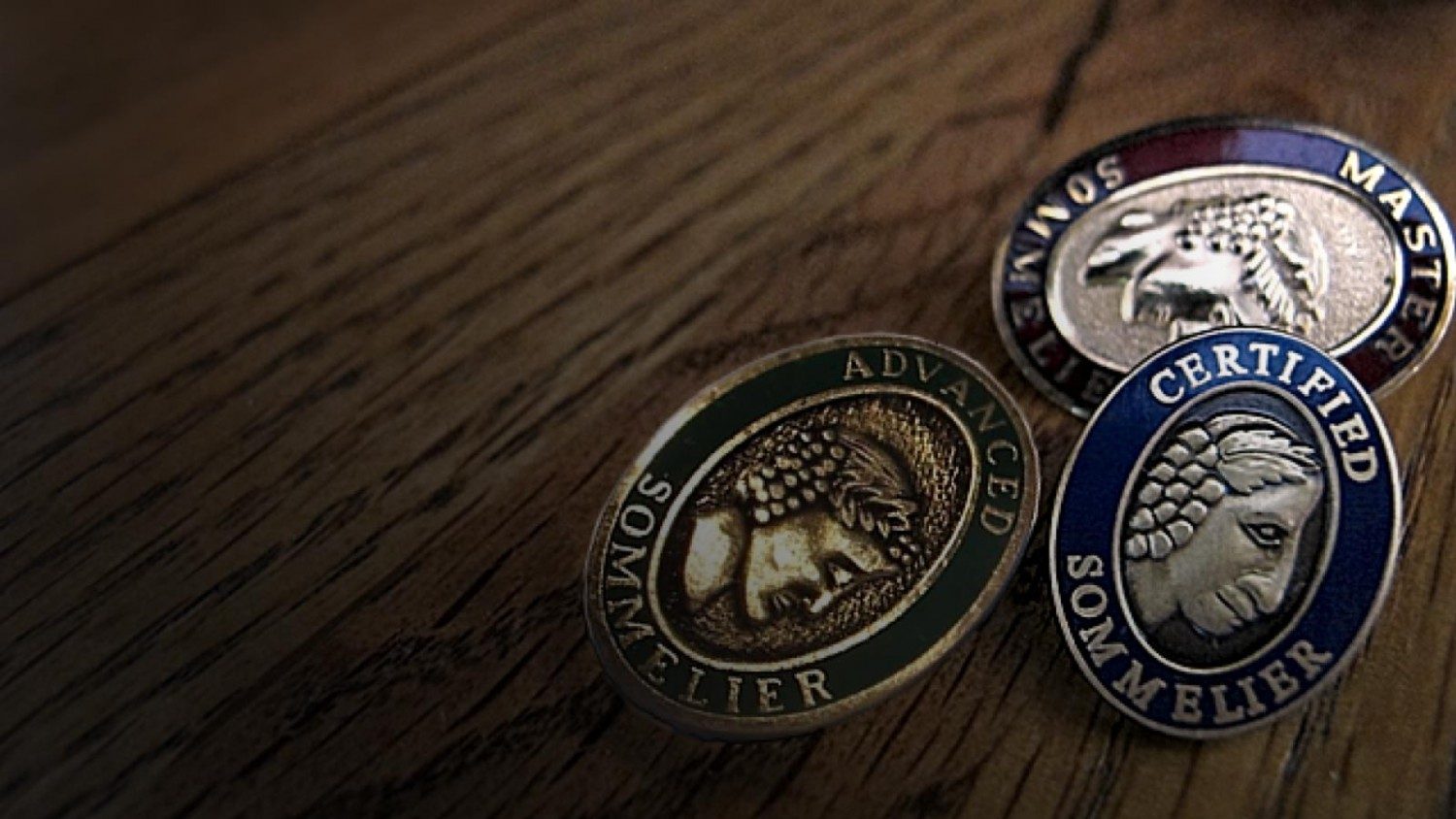
So, how can you tell if the person coming to your table knows what they are talking about? Well, if you carefully check their lapel pin, the color of their pin will tell you what level of certification they have achieved.
Being a sommelier is a time-honored position that goes back hundreds or even thousands of years. It requires a ton of knowledge about geography, viniculture, viticulture, wine laws, service standards among many other things. The goal of the sommelier is to help the clients at a restaurant engage with the complex topic of wine in an enjoyable way. The standards are controlled by a guild, the Court of Master Sommeliers.
The First Master Sommelier test was given in the UK in 1969 and in 1977 the Court of Master Sommeliers was established as the international testing body for Sommeliers. They continue to be the premier arbiter of what a sommelier must know and the level of their knowledge. If someone in the wine service business is serious about advancing their career, they will begin to move along the path towards Master Sommelier.
Introductory – Red Rim and Silver Interior 
This is the first level at which all prospective Master Sommeliers begin. It involves a course, followed by a written multiple choice test. The material covered is extensive, including topics like: grapes, wine making, major wine regions of the world, wine classifications, wine service and wine paring with food. This would be an appropriate level for a server in a high-end restaurant.
 Certified – Purple Rim and Pewter Interior
Certified – Purple Rim and Pewter Interior
Now we are getting serious. The Certified Sommelier qualification is designed for wine and beverage professionals in the Hospitality Industry wanting a meaningful qualification for the working Sommelier. You have to have passed the Introductory Class to move on to this level.
The knowledge required is extensive and no one passes without lots of studying (It took me 2 years). There is a detailed theory test with multiple choice and brief written responses and there is no way to pass unless youv’e done a lot of homework.
The candidates have to demonstrate wine service that meets the standards of the guild. This is done by giving a mock service to a Master Sommelier who peppers the candidate with questions on all things wine and spirits as the do service. My service exam covered everything from cocktails to after dinner drinks.
The most intimidating portion of the test for most people is the blind tasting. They have to taste two white and two red wines and must successfully analyze the wines using the standard methodology of the Sommeliers guild. Ultimately, they should be able to name the grape, country, region, age and quality of the wines they taste simply through sensory analysis.
Pass all three parts – and you are a Certified Sommelier.
 Advanced – Green Rim and Pewter Interior
Advanced – Green Rim and Pewter Interior
Now it starts to get hairy. The Advanced Sommelier Certificate course is intended for persons with extensive wine service experience and who wish to develop their knowledge and service skills to a higher level. This is appropriate for someone running the wine program at a very nice restaurant, perhaps even a Michelin starred restaurant – one of the best in the world.
A few years of dedicated study and immersion in the wine business are needed to pass this test. It involves two and a half days of lecture, followed by two and half days of testing. Once again, wine theory, wine service and blind tasting of six wines are examined. You have to pass all three sections, or you start this level all over again.
The Master Sommeliers that offer the test are also looking at demeanor and skill with diners asking difficult questions. An Advanced Sommelier should be able to handle almost anything related to wine.
 Master – Red Rim and Gold Interior
Master – Red Rim and Gold Interior
To put how hard it is to get a Master Sommelier designation, I want to put it in perspective. There have been 533 people that have traveled into outer space since 1960. There have only been 236 people that have achieved Master Sommelier worldwide since 1969, about the same amount of time. It’s really hard!
The format of the test is the same as for the Advanced Certification, but the level of knowledge, tasting and service are pushed to a whole new level. Odd wines from smaller countries could be on the test, unruly guests with difficult demands might appear in the service test and the theory testing is anything but straight-forward. The good news is that you can pass the test in parts, so if you pass a section, you don’t have to go back and take it again (unless you don’t pass in a certain amount of time).
The Court says: “Throughout the examination, the candidate must exhibit an exemplary standard of both technical and social skills, demonstrating the courtesy and charm of a Master Sommelier plus an ability to sell.”
If you make it past this test, you truly are in the wine elite.
Next time you are at a nice restaurant, check the lapel pin on your wine steward. You’ll have a new appreciation for the work and knowledge they put in to earn that designation. And if you have a highly-certified Sommelier – put yourself in their hands – they will make sure you have a great wine experience.
Cheers!

